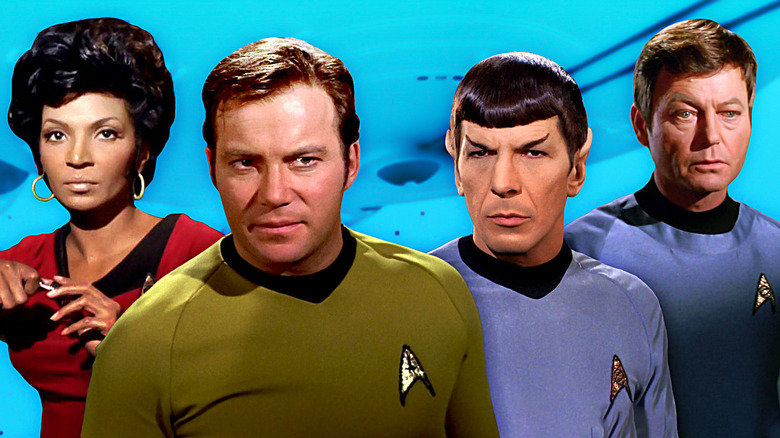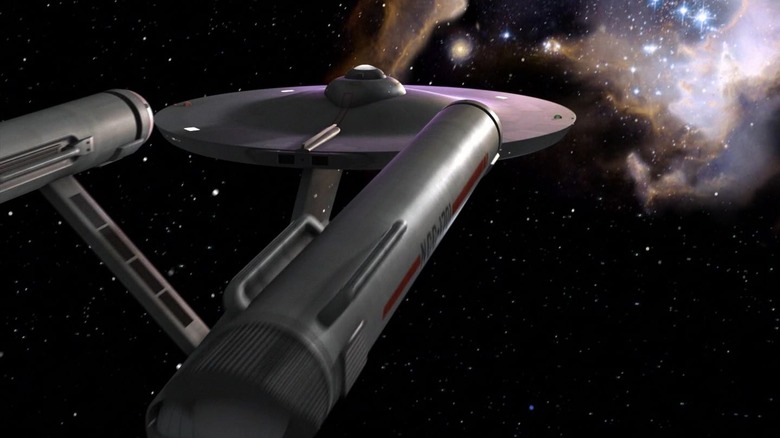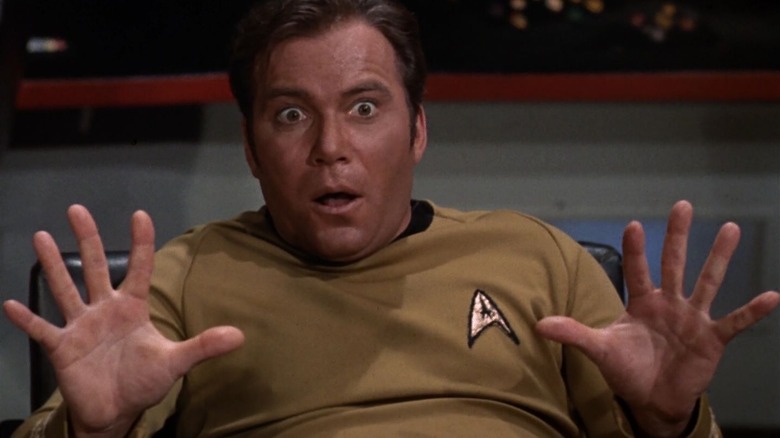Why Star Trek: The Original Series Was Canceled After 3 Seasons
Gene Roddenberry's seminal sci-fi space opera "Star Trek" infamously struggled when it first ran from 1966 to 1969. The show caught a certain amount of attention in the pop mainstream — the image of the pointy-eared Spock, as played by Leonard Nimoy, regularly graced magazines and TV Guides — but the ratings were never terribly high. Indeed, at the end of its second season, NBC was preparing to cancel the series entirely. It was only after a pointed and drive letter-writing campaign that the show was allowed to come back for a third season.
NBC, however, still didn't have much faith in the series, and played an unhelpful scheduling game with "Star Trek." It was going to be slotted in on Monday nights, an amenable time for its youthful audience, but at the last minute, was shunted into a Friday 10 p.m. time slot, one of the least desirable TV times imaginable. What's more, the show's budget was cut from $190,000 an episode to $175,000 an episode, forcing the showrunners to get a little creative with its sci-fi settings. One might notice that multiple episodes of season 3 take place in an open, black soundstage.
It's hard not to accuse NBC of deliberately trying to kill off "Star Trek," but the fact remains that the numbers remained low throughout its tenure. When it was announced that the series would be canceled once and for all at the end of the third season, another letter-writing campaign commenced. Sadly, it wasn't enough this time, and the final episode aired in June 1969.
Despite its relatively brief run, however, that third season proved to be a godsend for "Star Trek" as a franchise. After the show was canceled, it was put into eternal syndication. Only then did it find its audience.
It's not big secret: Star Trek was canceled because it had low ratings
When "Star Trek" first began airing in 1966, it came out of the gate strong with a 40.6 share in the Nielsen ratings. It's worth noting, however, that the night "Star Trek" debuted, it was only being broadcast opposite reruns on the other networks. When facing off against newer shows, "Star Trek" immediately began to falter. By its fourth episode, it had already fallen to 51st place. The series was perhaps too odd, too cerebral, or even too thoughtful for a mainstream TV audience in 1966. NBC might have even canceled the series after one season, had it not been attracting a younger demographic than the studio hadn't been able to capture until now.
"Star Trek" was also attracting a "quality audience" of, in NBC's own words, "upper-income, better-educated males." The series had an intellectual veneer to it that most mainstream shows lacked, and NBC was happy to let the nerds have their little space show. The problem was, there just weren't enough "quality audience" members to bolster the series and ratings continued to drop rather steadily, even as it stretched through its notoriously good second season. The one thing "Star Trek" viewers had working in their favor was their endless enthusiasm for the series. /Film has written before about the letter-writing campaign pioneered by Bjo Trimble.
The letters, and the knowledge that educated people, engineers, and scientists were watching the series, somewhat forced NBC to keep "Star Trek" on the air. At this point, however, it was only kept alive for the prestige. The actual ratings never went up.
Star Trek found eternal life through syndication
Most shows require four full seasons before they can be optioned for syndication by outside networks, but "Star Trek" managed to fill its episode quota with just three. Local stations began broadcasting "Star Trek," sometimes daily, in convenient afternoon time slots. It didn't take too long for audiences to find it, and the show quickly grew in popularity. It was too late to order new episodes, but the series was finally finding its audience. What's more, in 1970, reruns began broadcasting wildly throughout Europe and it was a hit there as well. Low ratings forced "Star Trek" off the air, but wide availability and incessant reruns gave it a new life no one could have predicted.
Indeed, the volume of reruns allowed fans to see every episode multiple times in a year, leading to some viewers to call themselves "Trekkies" for their encyclopedic knowledge of the show. Pretty soon, a whole burgeoning fan community began to develop. By 1972, "Star Trek" conventions began popping up in earnest. The price to broadcast "Star Trek" reruns only went up, and it became a valuable commodity for any TV station that could get it. In 1986, just before the debut of "Star Trek: The Next Generation," the original series was the single most popular syndicated TV series. It continued to air in reruns throughout the 1990s.
"Star Trek" would return in 1973 with "Star Trek: The Animated Series" and then again in 1979 with "Star Trek: The Motion Picture," a large-scale version of the TV show, armed with a massive budget and a sense of majesty not available on the small screen. That film would spawn cinematic sequels through to 1991.
There have since been many "Star Trek" TV series sequels, prequels, and spinoffs, with even more in the works.


